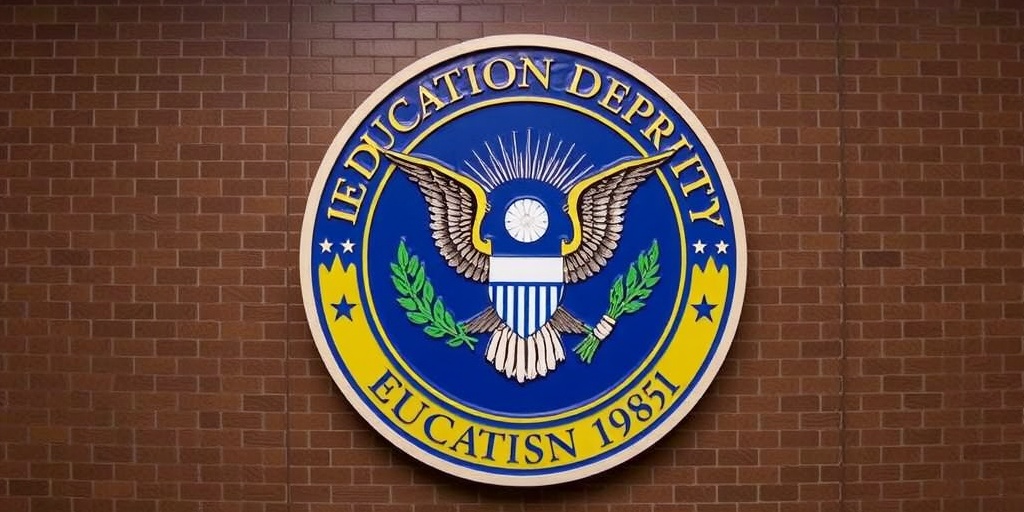Now Reading: Education Dept. Employees Given Buyout Offers Before Major Layoffs
-
01
Education Dept. Employees Given Buyout Offers Before Major Layoffs
Education Dept. Employees Given Buyout Offers Before Major Layoffs

Education Department Sends and Recalls Buyout Offer Amid Significant Layoffs
In an unprecedented move, employees of the Education Department received a surprising email on Friday morning, proposing a buyout program as a preemptive measure ahead of anticipated "very significant" layoffs. This offer, however, quickly vanished from inboxes, leaving many employees confused and concerned.
The initial email, sent at 11:03 a.m., encouraged all department staff to consider a "one-time offer" of a taxable payment of up to $25,000 if they applied to retire or resign by the end of the day on the following Monday. In this directive, the department implied that the voluntary buyout was being extended as a means to help employees exit gracefully before facing a substantial reduction in workforce. The email emphasized the urgency of the situation, labeling it an "urgent announcement" and stressing the rapid timeline for decision-making.
However, the apparent clarity of the offer was muddied by its rapid retraction. According to reports from three employees who initially viewed the email, it mysteriously disappeared, leading to widespread speculation and uncertainty among the workforce. Many employees, wishing to remain anonymous for fear of repercussions, expressed concerns over not receiving further information or guidance in the wake of the email’s disappearance.
Adding to the complexity of the situation, the link to the application form for the buyout remained functional and was accessible even on Friday afternoon, despite the department apparently pulling back the initial email. This contradiction raised further questions about the administration’s intentions and the legitimacy of the offer.
The proposed buyout appeared to align with the Voluntary Separation Incentive Payment Authority, which permits government agencies facing downsizing or restructuring to offer one-time payments up to $25,000 to employees deemed to be in "surplus positions or possessing skills no longer required in the workforce." Nevertheless, as employees grappled with the immediate implications of this offer, it was noted that there were no specific eligibility requirements outlined in the email. The absence of details on how individual separation payments would be calculated left many in a state of bewilderment.
The timing of the buyout announcement coincided with broader efforts by the Trump administration to streamline the federal workforce. Reports indicate that these efforts involve a range of tactics, including deferred resignation offers and layoffs targeted specifically at probationary employees. Additionally, there has been previous maneuvering to sideline certain employees through administrative leave, culminating in a dramatic shift in staffing across various federal agencies.
While the announcement explicitly mentioned that it was open to employees who were already considering retirement, there were no clarifications on the factors that might influence how much money each individual could expect to receive. This lack of transparency has only intensified the anxiety felt by department staff, many of whom feel their job security hangs in the balance.
Under guidance from the Office of Personnel Management, voluntary separation programs typically require a number of specific criteria, including a stipulation that employees must have served in the executive branch for a minimum of three years. These protocols are designed to facilitate voluntary separations as a means to mitigate or avoid the more disruptive and costly involuntary separations that can arise from mass layoffs. However, there was no mention of these typical requirements in the email, leading to additional confusion about its validity.
As Friday progressed, it became apparent that the ramifications of this singular email announcement might extend beyond the Education Department. Employees at other federal agencies have expressed uncertainty about whether they will receive similar buyout offers or if such drastic reduction measures are imminent in their own workplaces.
The whirlwind of confusion surrounding the buyout offer has shed light on the precarious nature of federal employment at a time when widespread cuts are being proposed. Many individuals within the Education Department are left grappling with what to do in the wake of an unanticipated and swift change in communication from their employer.
As of now, there has been no formal response from the Education Department regarding the status of the buyout offer or the next steps for employees. For many, the lack of clarity surrounding job security, along with the uncertainty of potential layoffs, leaves a shadow of doubt over their futures as citizens and employees of the federal government.
Stay Informed With the Latest & Most Important News
Previous Post
Next Post
-
 01New technology breakthrough has everyone talking right now
01New technology breakthrough has everyone talking right now -
 02Unbelievable life hack everyone needs to try today
02Unbelievable life hack everyone needs to try today -
 03Fascinating discovery found buried deep beneath the ocean
03Fascinating discovery found buried deep beneath the ocean -
 04Man invents genius device that solves everyday problems
04Man invents genius device that solves everyday problems -
 05Shocking discovery that changes what we know forever
05Shocking discovery that changes what we know forever -
 06Internet goes wild over celebrity’s unexpected fashion choice
06Internet goes wild over celebrity’s unexpected fashion choice -
 07Rare animal sighting stuns scientists and wildlife lovers
07Rare animal sighting stuns scientists and wildlife lovers





















